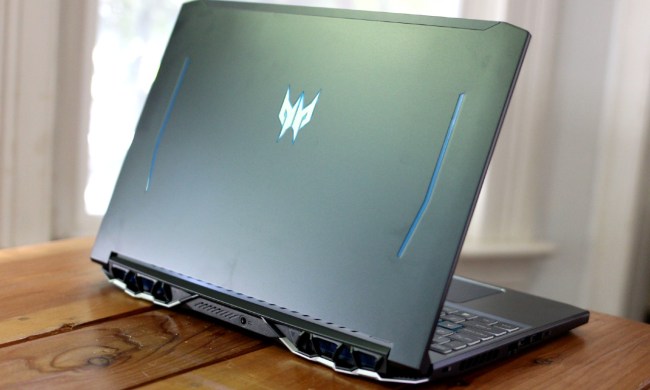MSI unveiled a brand new slate of laptops Wednesday, bringing professional-grade horsepower to a new range of mobile workstations. These aren’t your typical laptops. With powerful hardware under the hood which eclipses even the most powerful gaming laptops, MSI’s new mobile workstations are designed to serve up blazingly fast CAD/CAM applications — even when using a VR headset.
WT73VR

It’s easy to look at this range of mobile workstations and fantasize about the gaming performance they might deliver, but machines like the WT73VR aren’t built for gaming — they’re built for making games, and using intensive 3D modeling software. The WT73VR tops out the new range of workstations with an Nvidia Quadro P5000, and Intel’s 7th-generation Xeon processors.
WT73VR
- Intel Xeon or Core i7 CPU
- Nvidia Quadro P5000 GPU
- VR ready
With specs like those, the WT73VR is essentially a mobile server, capable of performing the kind of work you’d normally save for a serious desktop workstation. This massive draft-horse sized workstation is designed from the ground up to provide the kind of performance that professionals need when designing and building high-end VR content with applications like Autodesk Stingray, or other demanding CAD/CAM applications.
WS63

Not everyone needs to lug around a server blade to get their work done, and MSI’s WS series offers up a middle ground for creative professionals who need horsepower but still need something portable. Weighing in at just under four pounds, and slightly over half an inch thick, the WS63 is about the size of any other mid-range laptop, but it will run circles around all but the fastest mobile systems.
WS63
- 7th-generation Intel Core i7 CPU
- Nvidia Quadro P3000 GPU
- 0.69 inches thick
- 3.96 pounds
- Biometric security
Equipped with an Nvidia Quadro P3000 and 7th-generation Intel Core i7 processor, the WS63 balances performance and portability without sacrificing either one. What about all the heat that massive GPU will produce? Not to worry, the WS63 uses a proprietary cooling system comprised of three fans and five heat pipes that push heat out of its ultra-slim aluminum body before it can cause any system instability.
WE72 & WE62

Moving on down the line, the new WE series sacrifices some of the higher-end (and more expensive) components in order to provide a more entry-level workstation without sacrificing the supercharged graphical performance. The WE72 and WE62 both feature 7th-generation Intel Core i7 processors, and Nvidia Quaddro M2200 graphics cards, with 4GB of GDDR5 RAM.
WE72 & WE62
- 7th-generation Intel Core i7 CPU
- Nvidia Quadro M2200 GPU
- 1920 x 1080 FHD display
- 120Hz refresh rate
- 17.3-inch, or 15.6-inch form factor
The WE72 couples professional-grade performance with a 17.3-inch FHD display and 120Hz refresh rate, while the WE62 offers the same internals in a more compact 15.6-inch package. Both feature MSI’s proprietary cooling technology, and both workstations are built with entry-level professionals, or future professionals in mind, balancing portability and CAD/CAM performance.


